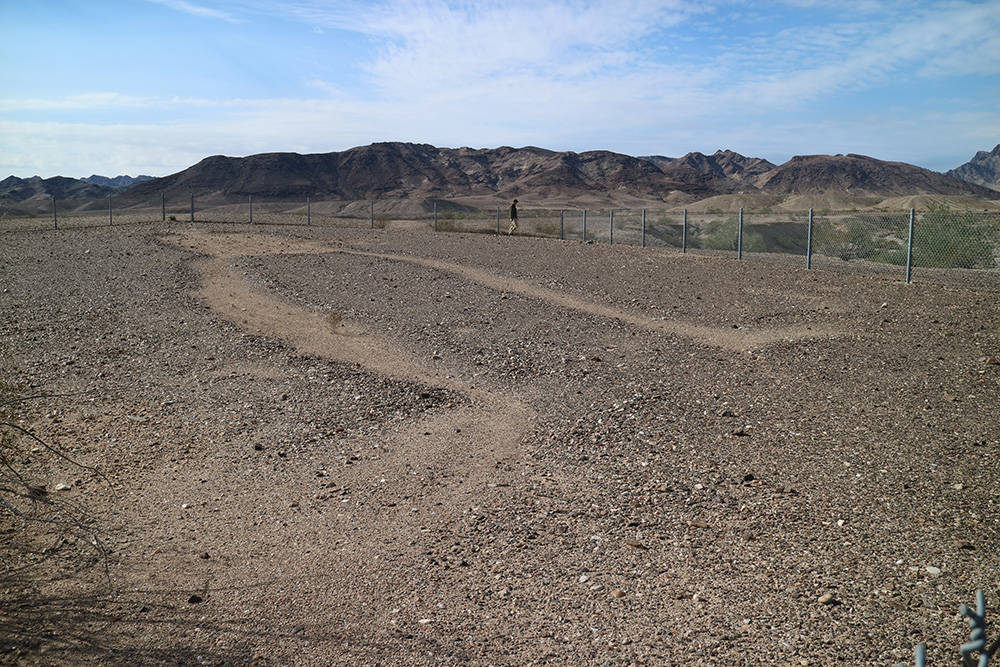In U.S., man-made intaglios only are found in Southwest
Near the lower Colorado River in eastern California, the Blythe Intaglios are giant designs, man-made long ago by engraving, tamping or scraping away the desert pavement, thus exposing the lighter gravel or soils beneath.
There are about 600 intaglios in the United States, but these are some of the most impressive because of their size. The largest anthropomorph — a figure representing a human form — is 171 feet from head to toe. Two others measure 102 and 105.6 feet. Besides these, there are zoomorphs, or figures shaped like animals; one appears to represent a rattlesnake; another, a cougar, or perhaps a horse. Still another seems to represent a spiral.
Geoglyphs similar to these are found in Peru, Chile, England and Australia. In the United States, they occur only in the Southwest.
Experts do not agree on when the intaglios were made, and their opinions range from 450 to 2,000 years ago. Native Americans consider them sacred, though their meaning is unknown. Many assume they are religious figures, for they are arranged to be most visible to a being in the sky.
The six figures lie in three locations, about 1,000 feet from one another, atop two mesas. While the best way to see the intaglios is from an airplane or a helicopter, most of us don’t have access to such luxury. With the help of interpretive signs, which have good aerial photos mounted on them, you can figure out what you’re seeing from the ground.
The site is within the Big Marias Area of Critical Environmental Concern, designated in 1987 to protect cultural and natural resources. It includes not only the intaglios, but rock art, rare cacti and animals. The very size of these designs makes them especially vulnerable to damage from off-highway vehicles, and the ones here were significantly degraded in that way before they were finally fenced off in 1974. However, there are believed to be unprotected intaglios still lying about the Southwest, and the signs warn adventurers to refrain from driving or walking on anything that looks as if it even might be a man-made design. It’s even a bad idea to attempt repairing one.
The Blythe area is dry, with very hot summers, so it is noted for water sports on the Colorado River during the summer and early fall. Late-fall and winter temperatures are pleasant. Fishermen will have a chance to take many species, such as striped bass, bluegill and catfish that have been known to exceed 40 pounds.
Deborah Wall’s book “Base Camp Las Vegas: 101 hikes in the Southwest” ($24.95, Imbrifex) is available on Amazon. She can be reached at deborabus@aol.com.
More information
Fishing information is available from the Blythe Chamber of Commerce website. For more information on the Blythe Intaglios, contact the Bureau of Land Management's Yuma Field Office at 928-317-3200 or tinyurl.com/yce84esv.
Directions
From Las Vegas, take U.S. Highway 95 south about 100 miles through Searchlight. Go left onto Interstate 40 east/ U.S. 95 south for 10.7 miles. Take exit 144, U.S. 95 south toward Blythe. Drive about 75 miles and go right onto the signed gravel access road.























